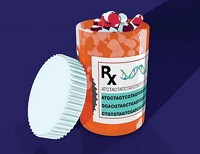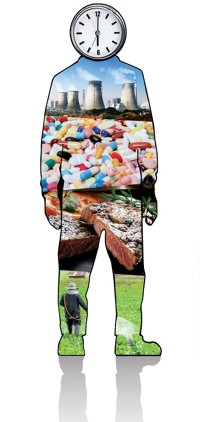Advertisement
Grab your lab coat. Let's get started
Welcome!
Welcome!
Create an account below to get 6 C&EN articles per month, receive newsletters and more - all free.
It seems this is your first time logging in online. Please enter the following information to continue.
As an ACS member you automatically get access to this site. All we need is few more details to create your reading experience.
Not you? Sign in with a different account.
Not you? Sign in with a different account.
ERROR 1
ERROR 1
ERROR 2
ERROR 2
ERROR 2
ERROR 2
ERROR 2
Password and Confirm password must match.
If you have an ACS member number, please enter it here so we can link this account to your membership. (optional)
ERROR 2
ACS values your privacy. By submitting your information, you are gaining access to C&EN and subscribing to our weekly newsletter. We use the information you provide to make your reading experience better, and we will never sell your data to third party members.
Analytical Chemistry
Exposing The Exposome
Individuals’ records of environmental exposures may yield clues to the causes of disease
by Celia Henry Arnaud
August 16, 2010
| A version of this story appeared in
Volume 88, Issue 33

When the human genome was sequenced, the hope was that our genetic blueprint would tell us everything we needed to know about the underlying causes of human disease. But it hasn’t worked out that way. Although the genome has given us some clues, it misses a major piece of the puzzle—environmental exposure.
“People have gotten very frustrated,” says Martyn T. Smith, a toxicologist at the University of California, Berkeley. “They thought they were just going to analyze people’s genomes, find the top susceptibility genes, and then they would be able to explain almost everything,” but that is not possible.
Stephen M. Rappaport, another Berkeley scientist, agrees. Genome sequencing has so far been unsuccessful at revealing the causes of disease, he says, “because the influence of genes on disease is a relatively small piece of the total disease pie.”
A small but growing group of “exposure scientists” wants to approach the problem in a new way. They plan to use the “exposome” to unravel the causes of disease.
First proposed in 2005 by Christopher P. Wild, a molecular epidemiologist and director of the World Health Organization’s International Agency for Research in Cancer, the exposome is defined as the record of all exposures, both internal and external, an individual receives over his or her lifetime, from conception onward. These exposures range from chemicals in the environment to the body’s response to infection or psychological stress.
Such record keeping, although conceptually simple, sounds overwhelming. “There’s a risk that in stressing the complexity of the exposome, we decide we can’t achieve it, so we don’t do anything at all,” Wild says. “Even a partial characterization of the exposome could bring us huge benefits.”
Rappaport and Smith both use the analogy of a movie trailer to explain how measuring even a fraction of the exposome could be beneficial. If a movie were to represent an individual’s life, then each photograph in the film represents an individual exposure event, Rappaport explains. In a trailer, which condenses a two-hour movie to about 30 seconds, “you’ve got a lot fewer photographs, but those photographs are the most important parts of the movie.”
The same is true for the exposome. “If we were smart, we could ask, ‘What are the critical stages of a human’s life?’ ” Rappaport says. Such periods would include in utero development, puberty, and early adulthood. “We probably don’t need the full two hours’ worth of a movie to get useful information about a person’s exposome.”
Rappaport and others propose a “top down” approach using various genomic, proteomic, and metabolomic methods to gather the information needed to characterize the exposome—for example, measuring gene expression, protein adducts, metals, and metabolites in human blood—and then using data analysis to sort out which ones are related to disease. This differs from a “bottom up” approach that tries to determine whether a set of ambient-level chemicals in air, water, and food causes disease. The top-down approach “has the advantage of integrating all of a person’s exposures from external sources and endogenous sources,” Rappaport says, “even those produced by factors such as stress, extra weight, and infections.”
Dean P. Jones, a toxicologist at Emory University, had been doing top-down analyses even before he heard of the exposome. “I decided that one had to abandon the notion that you started with a very explicit hypothesis,” he says. “Instead, you embraced the new ‘omic’ technologies, where you could basically look at a global spectrum of what’s happening. Allow the biologic system to tell you what’s really important.”
Jones uses mass spectrometry to measure metabolites in plasma, searching for the effects of environmental exposure. He looks for patterns, rather than trying to identify every chemical. “At least 40% of the chemicals we detect in human plasma are not in the human metabolic databases,” he says. “If one limits exposure studies to known chemicals—even if you had assays that could measure all the known chemicals—you’re probably going to miss half of what’s in human plasma.”
Meanwhile, Rappaport has been developing mass spectrometric methods to identify chemicals, including damaging reactive electrophiles, that form adducts with human proteins, such as the albumin in blood. Albumin is the most abundant protein in serum.
“We’re using albumin simply as a vehicle for finding out what the reactive chemicals in serum are,” he says. An electrophilic compound will react with all available nucleophiles, Rappaport says, including nucleophilic residues on albumin.
Rappaport and his coworkers focus on a particular cysteine residue, the only one in albumin that is not part of a disulfide bond. Because this cysteine is buried in the molecule, limiting access to the site, the method tends to find small adducts with masses of less than 300 daltons.
“I’m interested in looking at all reactive electrophiles,” Rappaport says. “I don’t want to bias myself by thinking it has to be an electrophile associated with some pesticide or with some other toxic substance. Some things are going to turn out to produce much higher adduct levels than others. Those are probably the things that we should zero in on to try to figure out what’s causing disease.”

Mass spectrometric techniques are appropriate for the research stages of determining the important aspects of the exposome, but the analyses ultimately need to be done cheaply and quickly with lab-on-a-chip devices, Smith says. “With suitable investment, it’s perfectly doable. It’s something engineers could do quite easily,” he says.
Smith and others advocate a “Human Exposome Project” that could develop instruments and collect exposome information. Smith sees such a project involving an international group of centers that could “develop the equivalent of a sequencer for the exposome” and then start applying it to different populations. An exposome project could be much more modest than the Human Genome Project, Smith notes. “With a relatively small investment of a few million dollars, you could get things going,” he says.
The project would involve “agreeing on a prioritized set of key exposures,” Wild says. “We really need to encourage investment in studies to explore the relationship between an exposure and changes in the ‘omics’ biomarkers,” he says. Without investment now, Wild fears that the technology won’t be available to capitalize on various cohort studies that are now under way. The samples from such studies represent a rich vein that could be mined for exposome information.
Tina Bahadori, an exposure scientist and managing director of the Long-Range Research Initiative (LRI) at the American Chemistry Council, an industry trade group, has been impressed by the receptiveness of industry scientists to the exposome concept. “They feel the majority of chemicals out there are not the cause of diseases people think are associated with environmental chemicals,” she says. “The sense is that a better understanding of exposures will exonerate the majority of chemicals people are afraid of.”
Individual companies will probably not contribute to the elucidation of the exposome, but the chemical industry as a whole is participating through programs such as LRI. “The members of ACC have contributed to a research program that has the luxury of looking ahead 20 to 25 years,” Bahadori says. “They’ve given us the green light to start exploring where some investments can be made.” LRI has started working with Rappaport, as well as expanding its own work on biomonitoring and exposure science.
But not everyone is convinced about the practicality of the exposome. “These exposures are going to be everything from sociological stresses to psychological stresses to chemical, physical, and biological stresses,” says Paul J. Lioy, director of the Exposure Measurement & Assessment Division of the Environmental & Occupational Health Sciences Institute at Robert Wood Johnson Medical School, in Piscataway, N.J. Especially needed, he says, is a common metric that can be used to make meaningful comparisons between these different types of exposures. Without such a metric, “we may fail to get what we all want to find: the right answer.”
“We need a good discussion of how we can make the exposome fit across different fields,” Lioy continues. “It’s a very useful concept. It’s a matter of fleshing it out. The proof of the pudding will be in who uses it and how we’re able to come up with an approach that’s understandable by all.” The real test, Lioy says, will be whether the exposome concept can reduce an individual’s risk of disease.
Proponents believe that the exposome could help with both public health decisions and individual medical care. “We need answers about risks at the population level in order to make public health interventions to protect the population,” Wild says.
“If we actually did invest in and understand the exposome and develop the technology, everyone could monitor their own exposome,” Smith says. “We could take preventive strategies based on somebody’s exposome and changes in that exposome.”
In this way, the exposome could pave the way for the personalized medicine that the human genome has promised but not yet achieved.




Join the conversation
Contact the reporter
Submit a Letter to the Editor for publication
Engage with us on Twitter